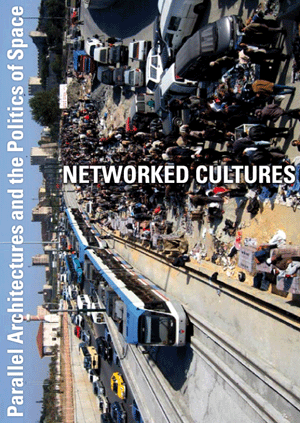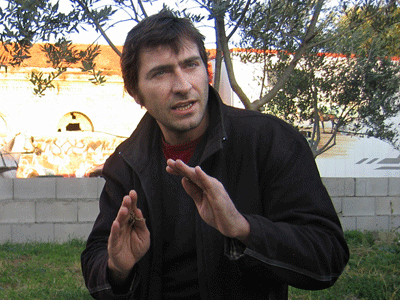_loginregistrieren_database_5 Factories - Worker Control in Venezuela Dario Azzellini & Oliver Ressler _ALMOSTREAL ECF _AnArchitektur Jesko Fezer _Arizona Road Azra Aksamija _Balkan Konsulat rotor _Bata-ville: We are not afraid of the future Nina Pope + Karen Guthrie / www.somewhere.org.uk _Black Benz Race krcf in collaboration with Felix Stalder, Arben Gecaj, Faton Topalli and Osman Osmani _Black Sea Files Ursula Biemann _Camp La Jolla Military ParkOwen Mundy _CHANGE REALITY: Renaming the Streets of Zagreb REINIGUNGSGESELLSCHAFT _Conceptual Paradise. There is a place for sophistication Stefan Roemer _de-regulation Irit Rogoff, Kutlug Ataman, Stefan Roemer_news ____________Bloomberg SPACE, London ____________Kumu Art Museum Tallinn ____________Open Space, Open Systems - Vienna ____________CAA 2011 Conference, New York ____________Forum Stadtpark, Graz ____________Symposium, Istanbul ____________lungomare, Bozen/Bolzano ____________Metropolis Biennale 2007-17, Copenhagen ____________new publication available now ____________Mestna Galerija, Ljubljana ____________Livestream of Networked Cultures documentary ____________ |
_ConversationsIacopo Gallico
Iacopo Gallico
PM/HM: Stalker is a network known for setting up encounters with other cultural networks and expanding the traditional scope of creative practice. For instance, Stalker started Ararat in Campo Boario as an art project, but it seems to have taken on a life of its own. Is this flow of agency something that is inherent to the idea of Stalker? Iacopo Gallico: Stalker evolved mainly out of an attitude adopted by architecture students when they squatted at Valle Giulia, the Faculty of Architecture at the University of Rome La Sapienza. This was in 1990. A group of students, who were not associated with any particular ideology or political party, took a political action – “squatting” – as their point of departure. They tried living in the university, and making it a space that would allow them to imagine a different world and a different way of viewing the relationship between culture and space. Hence, for us Stalker is a “laboratory of urban art”. This means there is a group of people who want to identify with others and use space as a device to do so – and this is what determines Stalker. It’s a flexible constellation of people operating in the moment, a moment shaped by on-going projects; there’s a direct relationship between the project to be developed and the profile of the group who are in charge of developing it, and for us this is “a network”. In projects like Ararat, Xenobia: the City, the Strangers and the Becoming of Public Space (Ararat, Xenobia:la città, gli stranieri e il divenire dello spazio pubblico); or Imagining Corviale, a network represents the project itself: if you take a map of everyone involved in a project, it doesn’t just represent a configuration of people we relate to or follow, but also mirrors the complexity we’ve found. Such a map enables you to understand the kind of work that is emerging. Campo Boario was a slaughterhouse situated in an industrial part of Rome at the end of the nineteenth century. When the city expanded, it became unusable and so was abandoned in 1975. At the time I was living not far from it. From my room it looked like it was empty and I often thought it was a shame that the city didn’t make it available to the public. When I finally visited it, I realised that it was not vacant. In fact, there was an air of fear and suspicion about the place and it was anything but empty: many communities of foreigners lived there – Kalderash, North Africans, people from eastern Europe and others who had just found shelter there. They all shared this space, which somehow was in a sort of dynamic balance. We first entered this “microcosm” during the Biennial of Young Artists from Europe and the Mediterranean, which took place at the Campo Boario in 1999, though in a restored section of the complex. The topic of the exhibition was public space, and together with the community of Kurds who had arrived in Rome following the Öcalan affair, Stalker squatted in the veterinary building. The aim was to create a cultural centre in this “promiscuous” public space – promiscuous in the sense that one and the same space fulfilled multiple purposes and so satisfied the needs of the community. Above all it was a place where different cultures could meet. This space constitutes a “marginal area”, what we call an “actual territory”. This means a territory continuously in a state of becoming and transforming. It’s strange to go to Ararat, as we named it, because you always encounter different people there – in fact, this aspect is even stranger than experiencing how the place itself is changing. Though this is so only because Ararat has remained an open space, a platform for meeting and exchange, a real hub; here we’re actually able to discover and experience what a network is and how it works. It’s incredible to see how the Kurds are connected to each other, and it’s extremely interesting and stimulating to be able to trace their networks as well as map the geographies of these new cultural identities in Europe. PM/HM: How has this approach of tracing different cultural networks informed your work in Corviale, a huge housing block on the outskirts of Rome, which has become a symbolic site of urban conflict at the city’s periphery? Iacopo Gallico: The idea was to work on the many “images” of Corviale. How do the inhabitants of Rome see and think of this location, and how do its inhabitants view the institution and municipality of Rome? We tried to proceed from people’s perception of the place, to create new relationships with its inhabitants and go beyond common tales about it. What we discovered was that Corviale is the product of a mix of politics and architecture. It has 8000 inhabitants and cost eleven millions euros to build. Though perhaps even more important, the municipality has spent four times that amount in the past twenty years, and this was almost always in relation to elections. In fact, Corviale is a big box created for winning votes. Of course you can also say it’s a wonderful objet d’art, a sculpture, a monument – everything you might desire except a place to house people. Nevertheless, people have been able to adjust to life inside Corviale. Left to their own devices, they have organised themselves, and somehow come to terms with the place – especially on the fourth floor where there is this corridor running through the middle of the building. It was originally conceived as a linear service area. But at the time it was completely empty, so people decided to squat and live in it. We did our project on this fourth floor, and found a way to listen and understand. Everything starts with listening. In Ararat, we were also dealing with a strongly politicised community. At the beginning it was quite hard to define limits. Art allows you to cross the boundaries of politics. Yet if you begin by approaching problematic political issues, you’ll find a wall, a wall of misunderstanding. But if you start with the space itself and how to organise it, share it, or the likes, it’s totally different. In Corviale, things were no different. We earned the trust of its inhabitants; they understood that we weren’t the usual municipal architects only interested in measuring their apartments. We wanted to comprehend more, for instance, the geography of the relationships interwoven into the space. We’re now able to say that self-organisation starts with the capability to adapt your needs to a context; this means having no outside interlocutors who impose rules about how you have to manage things. Our research is based on a concept reflected also in how we operate as a network. This network is not conceived hierarchically; members of Stalker are completely independent from one another. In our society this is a precondition that has to be established in order to transform competition into collaboration. It involves the ability of autonomous individuals to work toward the same end, the same project. We can think very differently, but if we share the same project, we can collaborate together. This is the strength of networking. PM/HM: How have these experiences of connecting identities, localities and temporalities informed the network of Osservatorio Nomade, which you created to facilitate an understanding of the changing geographies of Europe? Iacopo Gallico: Osservatorio Nomade is an interdisciplinary research project initiated by Stalker that proposes ways of intervention based on spatial practices of exploration, listening and relation, activated through creative tools of interaction with the environment and the inhabitants, and archives of memories. It’s a meta-structure we developed for the project On Egnatia, a Path of Displaced Memories in 2004. The idea was to build a metaphorical and transnational monument with stones, Salentine stones. For us these stones were a symbol of pain as well as tradition, of the relationship between man and territory. We used the stones to collect stories from people who had migrated along the Via Egnatia. We returned the stones to locations where the speakers asked us to because something special had happened along the way to them there. The Via Egnatia is an ancient path that follows the Via Appia and goes to Istanbul; it was constructed during the Roman Empire to take the army to the border, but it has changed its course many times over the ages. Now the Greeks are building a very modern motorway there, called Egnatia Odos. It runs straight through the country, from Igoumenitsa to the Turkish border. Yet since historically the Via Egnatia passed through Albania, its re-establishment seems strangely connected with eastern Europe – and so for us, it has turned into a device to reveal the complexity of this part of Europe and its cities, where new communities of different peoples are emerging. In order to collect stories, we developed – in e.g. Rome, Athens, Paris, and Berlin – agencies of the Osservatorio Nomade network, a transdisciplinary group of people capable of sharing their approach to a territory and a context; where context means not a static place but a complex and dynamic reality forged by connections and relationships between agents who interact with the territory. To reveal the complexity of this reality, we used the Osservatorio Nomade network and involved different individuals who – due to their sensibilities and interests – would be able to monitor the very complexity it represents. And this is a complexity that is always also represented by another complexity, one manifesting itself in the representation of a system of relationships between agents and interlocutors.
|
_broadcasts_conversations+ Ana Dzokic and Marc Neelen+ Ayreen Anastas and Rene Gabri + atelier d'architecture autogérée (aaa) + Asya Filippova + Sophie Hope and Sarah Carrington + Branca Curcic + Christoph Schaefer + Campement Urbain + Claudia Zanfi + Despoina Sevasti and Poka-Yio + Erden Kosova + Helmut Batista _textsRadio as Spatial Practiceby: Paulo Tavares Survival Kits: Artistic Responses to Globalizationby: Marga van Mechelen What Ever Happened to Cultural Democracy?by: Sophie Hope I don't know how to explain ...by: Anca Gyemant Trading Placesby: Peter Moertenboeck & Helge Mooshammer Milosevic as Architectby: Srdjan Jovanovic Weiss When the Unavoidable Knocks at the Door ...by: Gulsen Bal Tracing Translocality: The BlackBenz Raceby: Felix Stalder travelling lexicon towards a global positioning systemby: Celine Condorelli |
